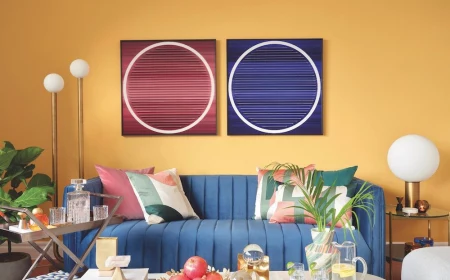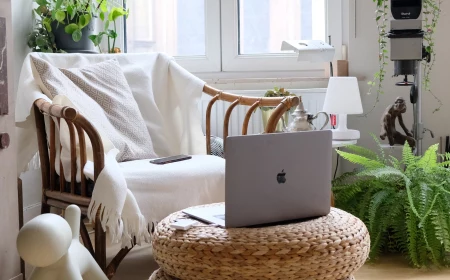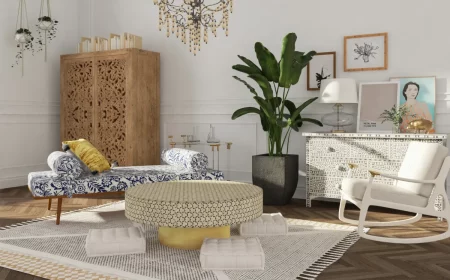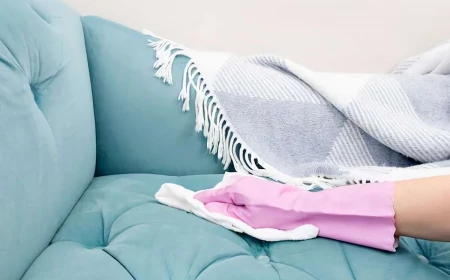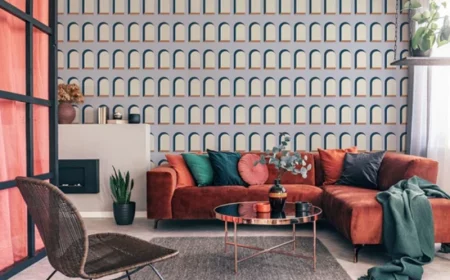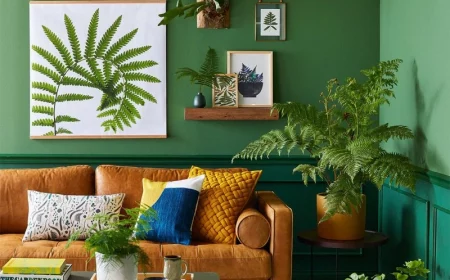The Real Reason Your Living Room Feels ‘Off’ (And How to Actually Fix It)
Ever walk into your own living room and just feel… stuck? It might be beautiful, with colors you love, but something’s just not right. It feels more like a museum you walk through than a space you actually live in. If that sounds familiar, I get it. I’ve seen it in hundreds of homes over the years.
In this article
Here’s the truth: a gorgeous living room that doesn’t work for your real life is a failure. The goal isn’t just to make it pretty, it’s to make it the most comfortable, practical, and welcoming spot in your house.
So many people start with the fun stuff, like paint swatches and pillows. That’s like picking the sprinkles before you’ve even baked the cake. The most successful layouts—the ones people are still happy with years later—always start by asking some simple questions about life, not just about style. We’re going to walk through the exact same process the pros use, so you can skip the costly mistakes and get it right the first time.
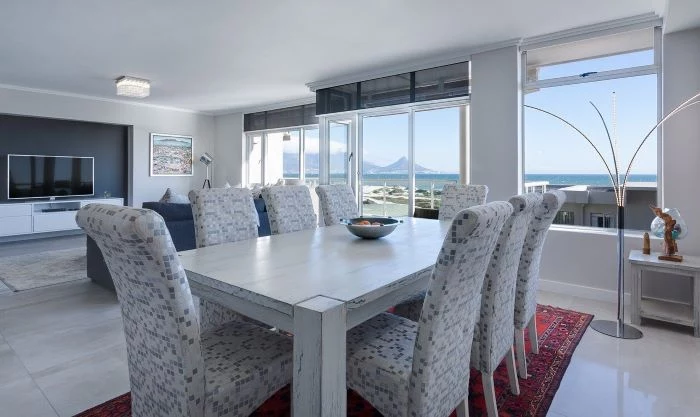
First Things First: What’s This Room’s Real Job?
Before you even think about moving a couch, you have to define the room’s purpose. Seriously, this is the most critical step. Every single decision you make later, from the sofa you buy to where you put a lamp, hinges on this.
Time for an Honest Chat (With Yourself)
Grab a notebook and let’s get real. This isn’t about the fantasy life you see in magazines; it’s for the life you’re actually living right now.
- Who’s using the space? Is it just you? A couple? A family with toddlers who treat furniture like a jungle gym? Or maybe teenagers who need their own zone? The answer immediately tells you what kind of durability and seating you need.
- What really happens here daily? Is this the main spot for binging Netflix? Is it where the kids spread out their homework? Do you try to cram in some work from home here? Or is it your quiet escape for reading? List everything, from morning coffee to late-night chats.
- How do you entertain? Are you hosting big parties for the big game, or do you prefer quiet nights with one or two friends? This decides whether you need a giant sectional or a more flexible setup with a few chairs.
- Got pets? A cat who thinks he’s a mountain climber or a big dog with a tail that could clear a coffee table in one swipe will definitely influence your choices. This is where durable performance fabrics and sturdy, well-weighted furniture become your best friends.
- Where does the stuff go? Think about it: remotes, gaming consoles, books, magazines, toys, cozy blankets. If you don’t plan for storage, you’re literally planning for clutter.
Your homework: Go through these five questions and write down the honest answers. Don’t censor yourself! And here’s a bonus question: What’s the one activity that happens in your living room that you wish didn’t? That’s a powerful clue.
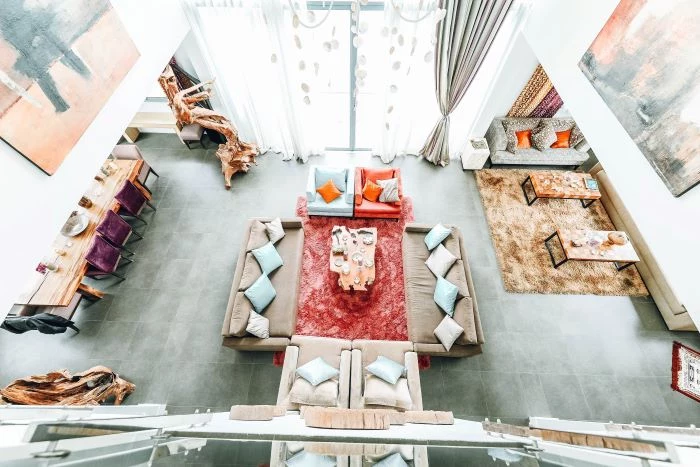
From my experience, this honest assessment is everything. I once worked with a family who dreamed of an all-white, formal living room. But they also had two little kids and a golden retriever. We had a frank talk. I asked them to picture a sippy cup of grape juice tipping over on a pristine white sofa. We talked about the stress of constantly saying “no.” They got the picture. We ended up with a gorgeous, high-end sectional in a durable light gray performance fabric (brands like Crypton or Sunbrella are amazing for this). They got the bright, elegant feel they wanted, but without the anxiety. That’s the power of putting function first.
Map Your Movement: The Art of Good Flow
Okay, now that you know what you’ll be doing, let’s figure out how you’ll move around. “Flow” is just a fancy word for the invisible paths people take through a room. Bad flow is what makes a space feel cramped and annoying. It’s that constant sideways shuffle you have to do to get past the coffee table. Good flow is effortless.

The Golden Rules of Clearance
The pros use standard measurements for a reason—they’re based on how human bodies actually move. Ignoring these is a recipe for frustration.
- Major Highways: These are the main routes, like from the hallway door to the sofa. You need at least 36 inches of clear width. This lets two people squeeze past each other and feels open. If you can spare 42 inches, even better.
- Minor Paths: Think about the gap between your sofa’s edge and the coffee table. You need a minimum of 18 inches here. It’s just enough space to walk through without turning sideways and to sit down comfortably.
- Functional Space: Furniture needs room to breathe! A recliner needs about 30 inches behind it to fully recline. A media console door needs to swing all the way open. Don’t block a door with a chair—it’s a rookie mistake and a fire hazard.

The Five-Dollar Floor Plan Test
This is a trick I swear by, and it has saved people thousands of dollars. Before you buy a single thing, grab a roll of painter’s tape. It’ll cost you maybe five bucks at Home Depot.
- Measure the furniture you’re considering buying (length and depth!).
- Use the painter’s tape to outline the shape of each piece directly on your floor.
- Now, live with it for a day. Walk the paths.
- Pretend you’re carrying groceries from the entry to the kitchen pass-through.
- Have another family member walk from the sofa to the window while you do it.
You will feel the pinch points immediately. You’ll know instantly if that gorgeous-but-deep sofa you saw online will turn your living room into an obstacle course.
Heads up! A crucial part of this is ensuring you have a clear, wide path to every exit. In an emergency, you don’t want an ottoman to be the thing that trips someone up. This is non-negotiable.
Getting the Size Right: Furniture That Actually Fits
This is probably the most common mistake I see: furniture that’s way too big or comically too small for the room. A massive, overstuffed sectional can make a normal-sized room feel like a crowded storage unit. On the flip side, tiny furniture in a big room with high ceilings looks lost and silly.
Scale is about how furniture size relates to your room’s size. Proportion is about how pieces of furniture relate to each other.
Here’s how to get the key relationships right:
- Coffee Table to Sofa: Your coffee table should be about the same height as your sofa cushions, or just an inch or two lower. Never higher. For length, a good rule is to have it be about two-thirds the length of your sofa.
- Side Table to Armrest: A side table should land at roughly the same height as the arm of the sofa or chair it’s next to. This makes it easy to set down a drink without fumbling.
The Great Rug Debate (Solved)
An undersized rug is a classic design sin. It makes the whole room look choppy and cheap. You’ve basically got three good options, and it’s all about the legs:
- The “All Legs On” Method: This is the most luxurious look, great for large, open spaces. The rug is big enough for all the furniture in a seating group to sit completely on it. It really unifies the area. Expect a large rug like this (say, 9×12 or bigger) to cost anywhere from $500 to several thousand dollars depending on material.
- The “Front Legs On” Method: This is the most versatile and popular choice for a reason. The rug is big enough for just the front legs of your sofa and chairs to rest on it. It visually connects everything without you needing a colossal—and colossally expensive—rug. This is the sweet spot for most living rooms.
- The “Float” (Use With Caution!): This approach, where no furniture legs touch the rug, only works in very specific cases, like under a coffee table in a very small space or to define a tiny entryway. In a main seating area, it almost always looks like a postage stamp. As a general rule, try to leave about 12 to 18 inches of bare floor between the walls and the edge of your rug.
I learned this lesson the hard way on an early project. My clients fell in love with a deep, plush sectional in a showroom. The length technically fit their long, narrow room, so they insisted. The moment it was delivered, we knew it was a disaster. It was so deep it choked the main walkway down to a tiny path. We had to send it back, which cost them a painful $500 restocking fee and delayed everything. Always, always, always use the tape trick to feel the furniture’s true footprint in your room.
Let There Be (Layered) Light
Lighting isn’t just an accessory; it’s a core building material. Bad lighting can make the most expensive furniture look drab and sterile. Great lighting makes everything—and everyone—look better. The secret is to use three distinct layers. Relying on just that one sad ceiling light in the middle of the room is a guaranteed way to make a space feel flat and uninviting.
The Three Essential Layers of Light
- Ambient (Overall) Light: This is your room’s general lighting, the foundation. It comes from recessed lights, a central chandelier, or track lighting. Its only job is to let you see and move around safely.
- Task (Specific) Light: This is focused light for doing stuff. Think a reading lamp by your favorite chair or a floor lamp that arcs over the sofa for doing a puzzle. It prevents eye strain and makes the room truly functional.
- Accent (Dramatic) Light: This is the fun stuff, the jewelry of your lighting plan. It’s a spotlight on a piece of art, a light behind a plant to create cool shadows, or a picture light over the fireplace. It creates depth and personality.
A Little Bit of Lighting Tech
Don’t worry, this is easy. For a cozy, relaxing vibe, choose light bulbs with a color temperature of 2700K to 3000K. This gives off that warm, yellowish glow we all love. And make sure your bulbs have a CRI (Color Rendering Index) of 90 or higher. A low CRI is why cheap LEDs can make your skin look weird and your beautiful navy blue walls look muddy. A high CRI makes all your colors look true and vibrant.
Oh yeah, and what about brightness? That’s measured in lumens. A good rule of thumb for a living room is to aim for a total of 10-20 lumens per square foot. So for a 15×20 foot room (300 sq ft), you’d want a total of 3,000-6,000 lumens distributed among all your light fixtures.
The Single Best Lighting Upgrade You Can Make
If you only do one thing, do this: put every light on a dimmer switch. All of them. Ambient, task, and accent. This gives you total control. Bright and energetic for game night, low and moody for a movie. It’s the most impactful upgrade for the money.
Quick Win: Not ready to hire an electrician? Go to any hardware store or look online for a plug-in lamp dimmer. They cost about $15, and you can plug any lamp into it for instant mood control. It’s a total game-changer.
A Quick Safety Note: While changing a bulb is easy, please don’t try to DIY electrical wiring or fixture installation. It’s dangerous and needs to be done to code. Hiring a licensed electrician is a must. Depending on the job, expect to pay anywhere from $150 to $500 for a few hours of work—a small price for safety and peace of mind.
The Finishing Touches That Make a Room Sing
Once you’ve nailed function, flow, scale, and lighting, you can get to the details that give a room its soul.
Don’t forget your walls! A pro-tip for hanging art is the 57-inch rule: the center of the artwork should be 57 inches from the floor. That’s average human eye level, and it just looks right. For curtains, remember to hang the rod high and wide—about 4-6 inches above the window frame and 6-10 inches past it on each side. This makes the window look bigger and lets in more light.
Time to Get Textured
A room with only smooth surfaces feels cold, no matter the color. Layering different textures is what creates that cozy, inviting feeling. The interplay between a smooth leather chair, a chunky wool blanket, a sleek metal lamp, and soft linen curtains adds a depth that color just can’t match.
By the way, if you want a simple shopping list to get that layered feel, try combining these: a faux leather chair (you can find great ones from $300-$800), a chunky knit throw blanket ($50-$150), and a natural fiber rug like jute or sisal (a 5×8 can run you $150-$400).
Don’t Forget About Sound
Ever been in a minimalist room with hardwood floors and bare walls? Conversations echo, and it just feels… harsh. That’s an acoustics problem. Soft things absorb sound. This is yet another reason area rugs, upholstered furniture, and even thick curtains are so important. They stop the room from feeling like a cave.
Bringing It All Home
See? Designing a living room that truly works is a step-by-step journey. It starts with being honest about your life, not with a paint chip. By focusing on function, mapping out your flow, respecting scale, and layering your light, you’re building a foundation that can’t fail.
So use that painter’s tape. Bring home samples. And most of all, give yourself permission to create a room that is genuinely, unapologetically for you. A great living room is more than a pretty picture—it’s a hardworking partner in your daily life.
Inspirational Gallery
Why does my living room still feel awkward even with beautiful furniture?
Often, the culprit is that all the furniture is pushed up against the walls. This creates a strange, empty void in the center and makes conversation feel like you’re shouting across a canyon. Try pulling your sofa and chairs away from the walls, even by just a few inches. Group them together over an area rug to create a cozy, intentional conversation zone. This single change allows the room to breathe and instantly feels more welcoming and professionally designed.
A rug that’s too small is one of the most common decorating mistakes. It makes the entire room look disjointed and cheaper.
The golden rule is that at least the front legs of your sofa and any armchairs should sit comfortably on the rug. This anchors the seating area, tying everything together visually. For a standard living room, an 8×10 foot rug is often the minimum. Brands like Ruggable or Revival Rugs offer a huge variety of sizes, making it easier to find the perfect fit without compromising on style or washability.
Lighting is more than just a single ceiling fixture. To create a truly functional and inviting atmosphere, think in layers:
- Ambient: This is your general, overall light. It could be your main overhead fixture or recessed lighting.
- Task: This is focused light for specific activities. A stylish reading lamp next to an armchair or a floor lamp illuminating a desk corner are perfect examples.
- Accent: This is the ‘jewelry’ of your lighting. It’s used to highlight artwork, architectural features, or plants. Think picture lights or small uplights.
The single biggest impact for the smallest budget? Textiles. If your layout is solid but the room feels flat, focus on texture. A chunky knit throw draped over the sofa, velvet cushion covers from a store like H&M Home, and a nubby wool rug underfoot can add a layer of sensory richness that paint alone can’t achieve. It’s the fastest way to dial up the cozy factor and make the space feel curated and personal.
Rectangular Coffee Table: A classic choice that works well with standard-length sofas. It offers ample surface area and creates clear pathways on either side. Ideal for more formal spaces or long, narrow rooms.
Round or Oval Coffee Table: Perfect for homes with small children (no sharp corners!) and for encouraging flow around a seating area. It softens rooms with lots of straight lines and works beautifully with L-shaped sectionals.
Ultimately, the best shape is the one that serves your family’s daily movements and safety needs.
“The center of any piece of art should be hung at 57 inches from the floor. This is the average human eye level, and it’s the standard used by most art galleries and museums.”
This simple guideline, often called the ‘gallery rule,’ prevents the common mistake of hanging art too high. By positioning your favorite pieces at this height, you connect them to the human scale of the room, integrating them with your furniture rather than having them float awkwardly near the ceiling.
- Creates a clear definition between the TV zone and a quiet reading nook.
- Makes a large, open-plan space feel more intimate and organized.
- Helps anchor your furniture so it doesn’t look like it’s floating.
The secret? A simple area rug. By placing a rug under a specific group of furniture, you create a visual ‘room within a room.’ You don’t need walls to tell people that this is the conversation spot or that’s the play area; the rug does it for you effortlessly.
A living room that looks good but smells stale will always feel ‘off’. Move beyond overpowering scented candles and create a subtle, signature scent. An essential oil diffuser is a great start; a blend of sandalwood and bergamot feels sophisticated and calming. For a zero-cost option, try a simmer pot: fill a small saucepan with water, a few citrus peels, a cinnamon stick, and some cloves, and let it gently simmer on the stove for an hour before guests arrive. It’s a natural and incredibly welcoming touch.
Important point: You don’t need to sacrifice style for durability. The days of ugly, plasticky ‘family-friendly’ furniture are over. Look for sofas and chairs upholstered in performance fabrics, like those from Crypton or Sunbrella, which are engineered to resist stains and clean easily. Another fantastic option is a high-quality leather that develops a beautiful patina over time; small scratches from pets or kids just add to its character. A brand like Article or Poly & Bark offers stylish leather pieces that are built for real life.
Feeling overwhelmed by color choices? Remember the 60-30-10 rule. It’s a simple pro trick for a balanced color scheme: 60% of your room is your dominant color (walls), 30% is your secondary color (upholstery, curtains), and 10% is your accent color (pillows, art, decor). This formula ensures the palette feels intentional, not chaotic.

